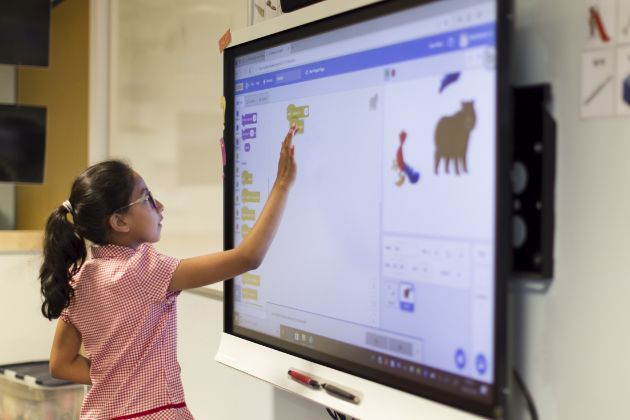Top tips for leading computing in your school
05 September 2022

As the school term begins and thoughts turn to new classes, here are a few tips for supporting computing teaching and learning in your school. Whether a new computing leader or a seasoned hand, there are many things we can do to ensure all children are receiving a first class computing education.
Find out where you are now
Audit your school to see how much computing is being done. This could be carried out by creating a short survey. Include questions such as:
- How many hours a week are spent on computing?
- What type of activities are happening?
- Which resources do teachers need to run effective lessons?
Try to find out what kind of support teachers and teaching assistants need. Is it for subject knowledge, developing digital skills such as programming, or assessments? Find out if there are other opportunities for computing learning such as cross-curricular links, after school clubs or school trips. Or perhaps there are parents who work in computing who may be able to come in and share what they do?
Remember that inclusion of governors and school leaders will help ensure that computing is at the forefront of your school development plan.
Teacher CPD
Your audit should help to identify development needs of individual teachers. This is a great time to find appropriate CPD for them and get it booked early! Most state funded schools will be eligible for a subsidy to help fund computing CPD. Don’t forget about your own CPD; develop your skills as a computing lead through one of our leadership courses.
Equipment
Knowing what equipment you have and what is required to support computing is key to teachers being able to deliver effective lessons. It will also help to pre-empt those last minute requests from colleagues for a data logger or a digital camera.
Identify the alternative equipment that is needed to deliver your computing curriculum if you don’t have certain items. If you’re following a scheme there is often a hardware and software list that comes with it, so you can ensure you have everything you need. Encourage teachers to put back all equipment at the end of a topic and also let you know if things aren’t working as they should be, so you can get someone in to fix them. A signing out sheet is useful, as there is nothing worse than running around a school looking for cameras that have gone astray and are hidden in the back of a colleague’s classroom!
There are opportunities to borrow equipment, such as micro:bits or crumble controllers from your local Computing Hub.
Resources
There is a lot of support out there for teachers in terms of free resources. The Teach Computing Curriculum has everything you need to teach computing (lesson plans, activity sheets, homework and assessments). Even if you already follow a scheme you may need a unit on a particular area which your existing scheme doesn’t cover. The Primary computing resource page on the STEM Learning website details free resources for all year groups and offers hints and tips for running activities in class. Stuck for a lesson linked to algorithms? Try STEM’s Algorithms list of resources.
Develop digital skills
Sometimes it’s just a short introduction which can help support teachers to enable them to teach programming using a device like micro:bit. This short course is designed to support teachers to do this. If you’d like to know how to use the device in science, then this course from STEM Learning will help develop a STEM approach using the micro:bit in science.
Real life role models
Have you thought about getting a STEM Ambassador (access via STEM Learning website) to share their experiences? These are volunteers who use computing skills in their jobs, and aim to inspire children to enjoy STEM subjects.
Recognition
Whilst you are attending courses and developing computing within your school, you can also be working towards a nationally recognised certificate. Your colleagues may also wish to gain a certificate following the developing in the classroom pathway. It could also be a way of ensuring that computing keeps a high profile within the school.
Set up a code club
If you are looking to increase the profile of computing in your school, or enrich learning in computing, then why not set-up a club. The Code Club website offers free step-by-step projects and resources, so it is easy to get started.
Get Reading
Did you know that the NCCE has produced several reports and quick reads around effective computing pedagogy. Pick one area to focus on, and consider how effective you are at implementing these ideas and how you can share this with the rest of your school.
You never know, there may be a minute or two in between lunch and marking, when you can have a quick read!
Ask a question
If you are looking for advice on leading computing in your school, or want the perfect resource for a lesson, then post a question on our STEM Learning's primary computing community group and hear back from other teachers leading computing in schools across the country.